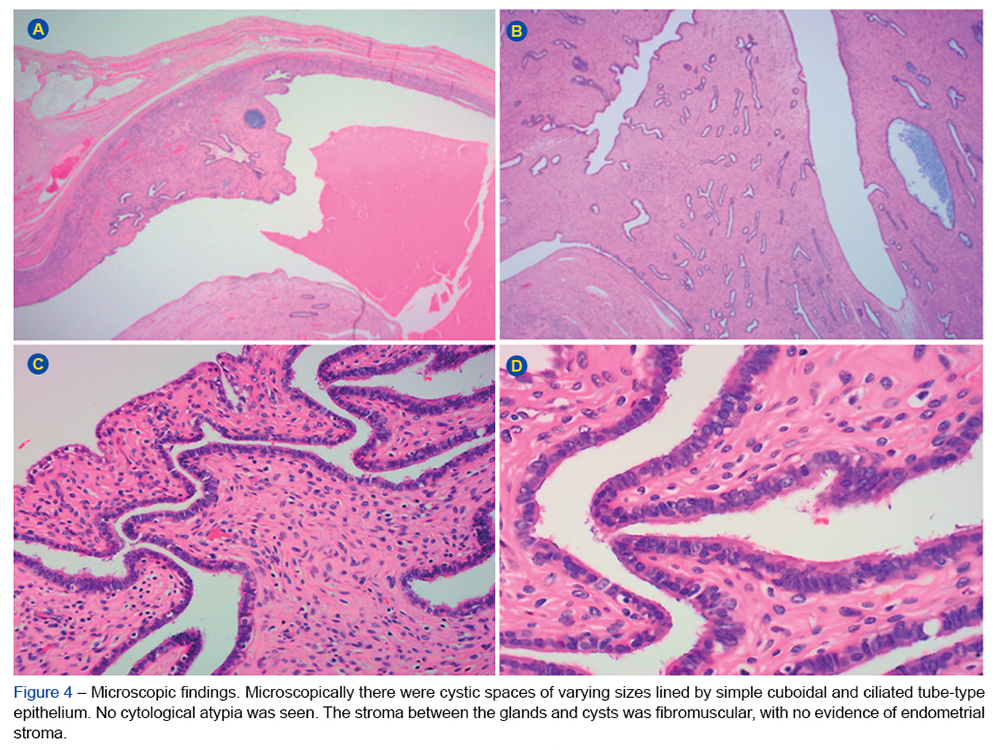SOCIAL MEDIA
Portuguese Medical Association's Scientific Journal

Introduction: Endosalpingiosis is a rare benign condition characterized by the presence of tubal epithelium outside the Fallopian tube. The clinical presentation of endosalpingiosis is nonspecific, and the diagnosis is typically incidental in women undergoing surgery for pelvic pain, infertility, urinary symptoms, or a pelvic mass. It can only be confirmed with histopathological examination.
Case Report: We report the first case of uterine florid cystic endosalpingiosis, with unusual hysteroscopic findings. We reviewed all the published cases of uterine florid cystic endosalpingiosis and their clinical presentation including hysteroscopic characteristics. It is a rare benign condition, with only 32 cases described in the literature. This is the first hysteroscopic description of this condition to be made.
Discussion: The patient first underwent a hysteroscopy and a leiomyoma resection when she was 51 years old. At 55, she went through another hysteroscopy, and a polypoid lesion was excised. A third hysteroscopy, one year later, revealed a new polypoid lesion in a similar location. After the initial incisions, this polypoid lesion disappeared. By decreasing the intrauterine pressure, it became visible again, corresponding histologically to an endometrial polyp with tubal metaplasia. At last, she underwent a laparoscopic hysterectomy with a final histopathological diagnosis of uterine florid cystic endosalpingiosis.
Conclusion: Florid cystic endosalpingiosis is a rare condition that may be associated with several bizarre hysteroscopic findings.